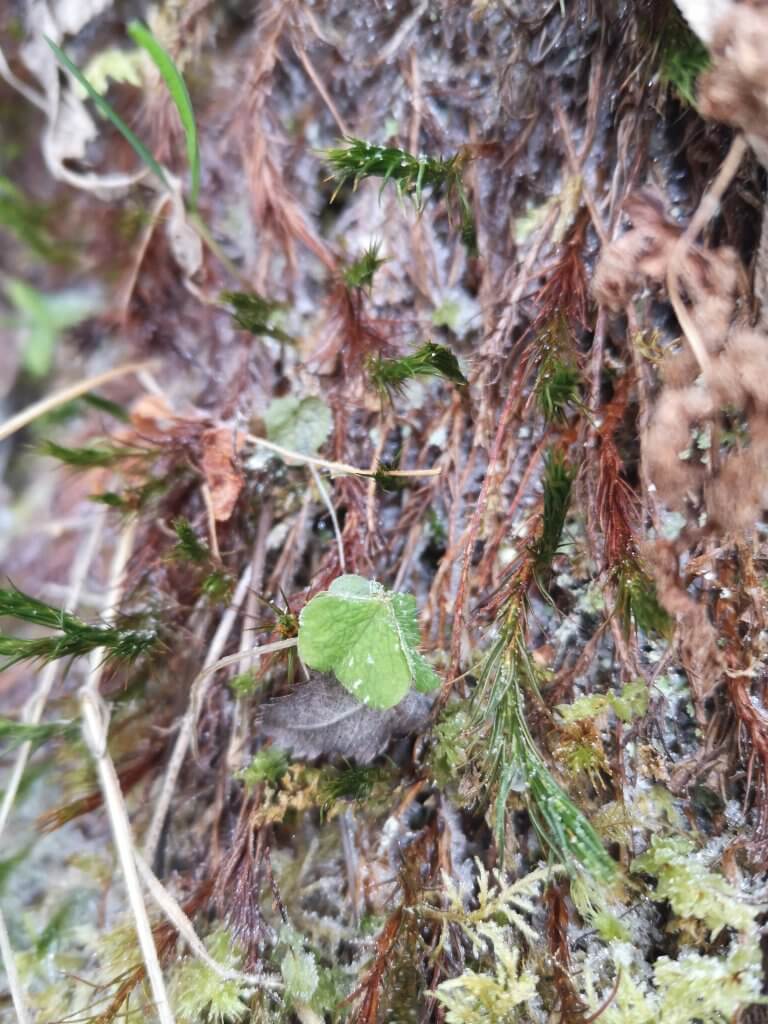winter foraging
even in nordic winter there are some wild plants to gather and here I have collected some of my favourites.
BE AWARE in winter it is even more important to be sure of what you harvest as some plants are not so easy to identify anymore. Plants such as angelica that have quite a few poisonous doppelgangers, I only collect when I have observed the individual plant throughout the season and am 100% sure it is the right one. Not only when harvesting in winter, it is also a good idea to read about possible cross-reactions, risks etc. (e.g. people who react to celery can also react to other plants from the same family or pregnant women should steer clear of juniper). There is no need to panic, many of our common foods can also cause allergies or even contain small amounts of poison such as e.g. almonds (hydrogen cyanide). At rolv.no you will find a lot of useful information about how the plants work and when you should steer clear of them. Happy gathering!

WOOD SORREL oxalis acetosella
I love it! The fine heart-shaped leaves are one of the first to be harvested in the spring and last well into the winter season. I think it tastes like green apples and that comes from the oxalic acid that is also found in rhubarb. Sometimes I find them under the snow and enjoy the good and refreshing taste.
JUNIPER juniperus communis
I like junipers as much as the goats do. I think it's a wonderful spice in all kinds of stews and soups, etc. I mainly use the berries for cooking. You often find both ripe and unripe berries (which are actually pine cones) on the same bush as they need two seasons to ripen. It is the ripe black-blue ones that I want for seasoning. I crush them just before using them and because I find it to be an unpleasantly strong taste when I bite onto them, I hang them in a tea infuser (often together with bay leaves) in the pot.


PINE picea abies
Did you know that you can eat your Christmas tree? (it is not recommended if you cannot say for sure that it has not been sprayed). Now that I have goats, they are probably going to eat the Christmas tree when it has done its job. And there is such a good smell in the barn when they pounce on it like four-legged piranhas. I content myself with picking a sprig here and there and use the needles mainly for oven-baked root vegetables just like rosemary. But also dried and ground into powder, they become a good and versatile spice.
POLYPOD polypodium vulgare
It is very sweet! I see it as a substitute for licorice root. So far I have only used it in tea as a sweetener or as a medicine, but I want to try it in different dishes as well.


ANGELICA angelica archangelica
This plant is mainly on this list because I often don't have time to collect the seeds in the middle of everything that happens in the summer and autumn in my garden. There's a spot where I hike to several times during a season and can confidently identify the plant. There are not many seeds left on the umbel now, but there is enough to sprinkle on a little here and there, and the flowerheads with frost and snow on them are so beautiful that I like to visit the plants throughout the winter anyway.
Do you practise winter foraging? If there are any plants that you miss on the list or if you have any questions, please write a comment.
Happy Goating & foraging


